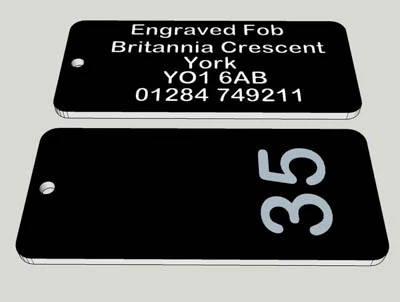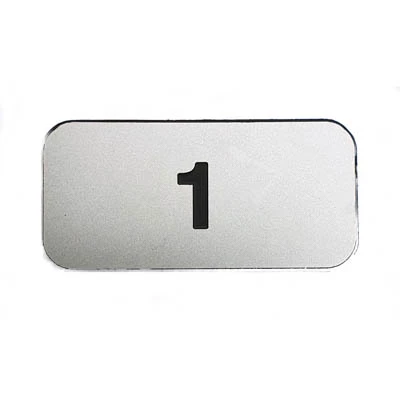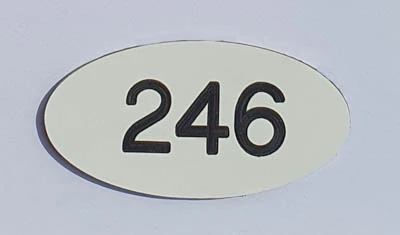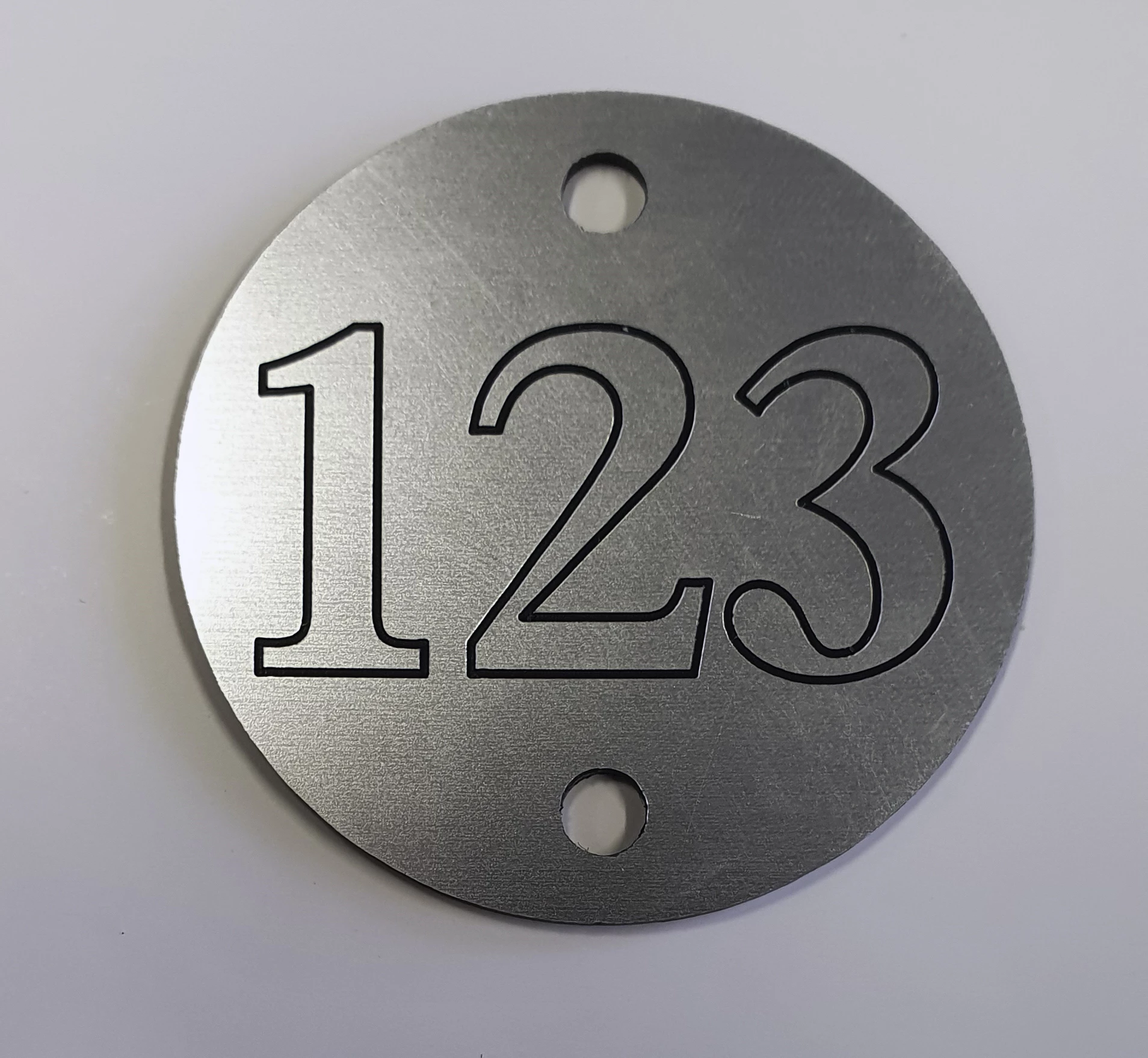Engraved laminate number plates and key fobs represent essential components in modern identification and security systems. Furthermore, these versatile products offer durable, professional solutions for countless applications across various industries. Whether you’re managing a large facility, organising a small office, or securing personal belongings, understanding the options available can help you make informed decisions.
Understanding Laminate Materials

What Makes Laminate Special
Laminate materials provide exceptional durability whilst maintaining affordability. Additionally, these materials resist scratches, fading, and moisture damage better than many alternatives. Most importantly, laminate surfaces accept engraving beautifully, creating crisp, permanent markings that remain legible for years.
Core Laminate Types
Standard laminate consists of multiple layers bonded together under high pressure. Subsequently, this construction creates a robust surface that withstands daily handling and environmental exposure. The outer layer typically features a protective coating that enhances durability and appearance.
Phenolic laminate offers superior strength and chemical resistance. Moreover, this material performs exceptionally well in harsh environments where standard materials might fail. Healthcare facilities, laboratories, and industrial settings particularly benefit from phenolic laminate’s resilience.
Melamine laminate provides excellent value whilst delivering reliable performance. Furthermore, this material offers a wide range of colour options and finishes. Schools, offices, and commercial facilities often choose melamine for its balance of cost and durability.
Material Options and Their Applications

Plastic Laminates
Plastic laminate materials excel in wet environments and high-traffic areas. Additionally, these materials clean easily and resist bacterial growth. Swimming pools, changing rooms, and food service areas benefit greatly from plastic laminate’s hygienic properties.
The non-porous surface prevents moisture absorption and bacterial infiltration. Therefore, plastic laminate number plates and key fobs maintain their appearance longer in challenging conditions. Moreover, these materials often cost less than premium alternatives whilst still providing excellent durability.
Metal-Core Laminates
Metal-core laminates combine the benefits of metal durability with laminate versatility. Furthermore, these materials provide enhanced security features that deter tampering. Banks, security facilities, and high-value environments frequently specify metal-core options.
The metal substrate offers superior strength and stability. Additionally, these materials resist bending and breaking better than standard plastic laminates. Consequently, metal-core laminates justify their higher cost through extended service life and enhanced security.
Speciality Materials
Antimicrobial laminates incorporate additives that inhibit bacterial growth. Subsequently, these materials provide additional protection in healthcare and food service environments. Hospitals, clinics, and restaurants increasingly specify antimicrobial options for enhanced safety.
UV-resistant laminates prevent fading and degradation from sunlight exposure. Moreover, these materials maintain their appearance in outdoor applications. Parking facilities, construction sites, and recreational areas benefit from UV-resistant formulations.
Shapes and Sizes Available

Standard Rectangular Formats
Rectangular plates offer maximum surface area for information display. Additionally, these shapes provide excellent stability when mounted on various surfaces. Standard sizes range from small identity tags to large directional signs.
Common dimensions include 25mm × 75mm for basic identification purposes. Furthermore, 50mm × 100mm plates accommodate additional information whilst remaining compact. Larger formats such as 75mm × 150mm suit applications requiring enhanced visibility.

Circular and Oval Options
Circular key fobs provide comfortable handling and distinctive appearance. Moreover, these shapes resist corner damage that might affect rectangular alternatives. Diameters typically range from 25mm to 50mm depending on application requirements.
Oval shapes combine the benefits of circular comfort with additional surface area. Subsequently, these formats accommodate longer text strings whilst maintaining ergonomic properties. Sports clubs, membership organisations, and access control systems often prefer oval designs.
Custom Shapes and Profiles
Custom shapes allow unlimited creative possibilities for unique applications. Furthermore, these options help organisations establish distinctive brand identity through shape recognition. Die-cutting technology enables virtually any shape within reasonable size constraints.
Complex profiles might include company logos, mascots, or architectural elements. Additionally, custom shapes often command attention better than standard formats. However, custom tooling requirements typically increase costs and lead times.
Font Options and Typography
Standard Font Families
Arial and Helvetica provide excellent readability in most applications. Moreover, these sans-serif fonts remain legible at smaller sizes common in key fobs. Clean lines and consistent spacing make these fonts ideal for professional environments.
Times New Roman offers traditional elegance with good readability. Additionally, this serif font conveys authority and permanence suitable for formal applications. Legal offices, educational institutions, and government facilities often specify Times New Roman.
Bold and Heavy Fonts
Impact and Arial Black create strong visual presence for important information. Furthermore, these fonts remain readable from greater distances than standard weights. Emergency information, safety warnings, and security notices benefit from bold typography.
Heavy fonts also improve contrast when engraving dark materials. Subsequently, these options enhance legibility in low-light conditions. Industrial facilities, parking garages, and security areas particularly benefit from bold font choices.
Speciality Typography
Script fonts add elegance and personality to appropriate applications. Moreover, these fonts work well for awards, recognition items, and ceremonial purposes. However, script fonts generally require larger sizes to maintain readability.
Condensed fonts maximise information density when space is limited. Additionally, these narrow characters fit more text within standard dimensions. Technical specifications, detailed instructions, and comprehensive directories often utilise condensed typography.
Engraving Methods and Techniques
Laser Engraving Technology
Laser engraving provides precise, permanent markings with excellent detail reproduction. Furthermore, this technology accommodates complex graphics, logos, and fine text with superior accuracy. Computer-controlled systems ensure consistent results across large production runs.
The laser beam removes material layers to create recessed text and images. Additionally, this process generates minimal heat, preventing material warping or discolouration. Consequently, laser engraving produces professional results suitable for high-end applications.
Rotary Engraving Systems
Rotary engraving employs spinning cutters to remove material mechanically. Moreover, this traditional method offers excellent control over depth and character formation. Skilled operators can achieve varied effects through technique and tool selection.
Single-line fonts work particularly well with rotary engraving systems. Additionally, this method accommodates larger text sizes effectively whilst maintaining sharp edges. Cost considerations often favour rotary engraving for straightforward text applications.
Diamond Drag Engraving
Diamond drag engraving uses hardened points to scratch surface materials. Furthermore, this method works well with softer laminates and creates distinctive character appearance. The process requires minimal setup and operates quietly.
Variable pressure control allows operators to adjust marking depth. Subsequently, this flexibility accommodates different materials and desired effects. Diamond drag engraving suits applications requiring quick turnaround times and simple text requirements.
Design Considerations and Options
Colour Combinations
High contrast combinations ensure maximum readability across various lighting conditions. Moreover, traditional black text on white backgrounds provides universal recognition and professional appearance. These combinations work well in virtually all environments.
Coloured backgrounds can reinforce brand identity or organisational themes. Additionally, specific colours might indicate different access levels or departmental assignments. However, colour choices should maintain adequate contrast for visibility.
Layout and Formatting
Centred text creates balanced, professional appearance suitable for most applications. Furthermore, this alignment works well with various text lengths and multiple information lines. Centred layouts provide flexibility for future content changes.
Left-aligned text maximises space efficiency when including multiple data elements. Additionally, this format accommodates variable-length information more effectively. Directory listings, detailed specifications, and comprehensive instructions benefit from left alignment.
Logo and Graphics Integration
Corporate logos enhance brand recognition and professional credibility. Moreover, combining text with graphics creates distinctive identification systems. However, logo reproduction requires careful attention to detail and appropriate sizing.
Simple graphics and symbols can convey information quickly across language barriers. Additionally, these elements help users identify specific areas or functions rapidly. Safety symbols, directional arrows, and status indicators provide universal communication.
Applications Across Industries
Educational Institutions
Schools and universities rely on engraved laminate systems for comprehensive identification needs. Furthermore, these materials withstand heavy use whilst maintaining professional appearance. Student lockers, faculty offices, and administrative areas benefit from durable marking systems.
Classroom identification, emergency procedures, and directional signage utilise laminate’s versatility. Additionally, these materials accommodate frequent updates and modifications. Academic institutions appreciate the balance of durability and cost-effectiveness.
Healthcare Facilities
Medical environments demand materials that support strict hygiene protocols. Moreover, antimicrobial laminates provide additional protection against contamination. Patient rooms, equipment storage, and staff areas require clear, permanent identification.
Emergency information, safety procedures, and access control systems benefit from laminate durability. Additionally, these materials resist cleaning chemicals and frequent sanitisation. Healthcare facilities rely on consistent, professional marking systems.
Commercial and Industrial Settings
Workplace environments require identification systems that perform reliably under demanding conditions. Furthermore, industrial applications might involve exposure to chemicals, temperature extremes, or physical abuse. Laminate materials provide necessary durability whilst maintaining cost-effectiveness.
Employee identification, equipment marking, and safety signage utilise laminate’s versatility. Additionally, these materials support compliance with workplace safety regulations. Industrial facilities appreciate materials that combine performance with value.
Leisure and Fitness Facilities
Gyms, sports clubs, and recreational facilities benefit from laminate’s resistance to moisture and heavy use. Moreover, these environments often require frequent cleaning and maintenance. Laminate materials maintain appearance whilst supporting rigorous hygiene protocols.
Locker identification, equipment labelling, and membership systems utilise engraved laminate effectively. Additionally, these materials withstand exposure to cleaning chemicals and physical handling. Leisure facilities value materials that combine durability with attractive appearance.
Customisation and Personalisation
Individual Requirements
Personal identification often requires unique information for each item. Furthermore, variable data engraving accommodates names, numbers, and specific details efficiently. Modern systems process individual requirements quickly whilst maintaining consistent quality.
Database integration streamlines production of personalised items. Additionally, automated systems reduce errors and improve turnaround times. Large organisations particularly benefit from systematic personalisation capabilities.
Batch Processing
Volume requirements often justify specialised production techniques. Moreover, batch processing reduces per-unit costs whilst maintaining quality standards. Schools, businesses, and organisations frequently order matching sets with individual variations.
Standardised templates accommodate consistent formatting across multiple items. Additionally, these systems ensure professional appearance whilst permitting necessary customisation. Batch processing provides efficiency without compromising flexibility.
Special Requirements
Unique applications might require non-standard materials or techniques. Furthermore, specialised environments could demand specific certifications or compliance standards. Custom solutions address requirements that standard products cannot meet.
Prototype development allows testing and refinement before full production. Additionally, this approach ensures optimal results for critical applications. Special requirements justify additional development time and costs.
Maintenance and Longevity
Cleaning and Care
Regular cleaning maintains appearance and extends service life significantly. Moreover, appropriate cleaning products preserve material properties whilst removing contamination. Gentle detergents and soft cloths provide effective cleaning without damage.
Harsh chemicals or abrasive cleaners can damage laminate surfaces permanently. Additionally, excessive moisture exposure might affect adhesive bonds. Proper care procedures ensure materials perform as intended throughout their service life.
Replacement Considerations
Planned replacement schedules maintain professional appearance and system reliability. Furthermore, proactive replacement prevents failures that might compromise security or identification. Regular assessment helps identify items requiring attention.
Compatibility with existing systems simplifies replacement procedures. Additionally, standardised specifications ensure consistent appearance across replacement cycles. Planning reduces disruption and maintains operational efficiency.
Environmental Factors
Temperature extremes can affect material properties and performance. Moreover, UV exposure might cause fading or degradation over time. Understanding environmental conditions helps select appropriate materials and replacement schedules.
Humidity levels influence material stability and adhesive performance. Additionally, chemical exposure might require specialised materials or protective treatments. Environmental assessment guides material selection and maintenance procedures.
Cost Considerations and Value
Initial Investment
Material costs vary significantly based on specification and requirements. Furthermore, premium materials justify higher costs through extended service life and enhanced performance. Initial investment should consider total cost of ownership rather than purchase price alone.
Production complexity affects pricing through setup requirements and processing time. Additionally, customisation and special requirements increase costs proportionally. Volume commitments often reduce per-unit pricing significantly.
Long-term Value
Durable materials reduce replacement frequency and associated costs. Moreover, reliable performance minimises maintenance requirements and operational disruption. Quality materials provide better value through extended service life.
Professional appearance maintains credibility and supports organisational image. Additionally, consistent performance reduces administrative burden and user frustration. Long-term value justifies initial investment in quality materials.
Budget Planning
Comprehensive specifications help obtain accurate pricing and avoid surprises. Furthermore, clear requirements enable suppliers to provide competitive proposals. Budget planning should include installation, maintenance, and replacement costs.
Phased implementation allows budget management whilst achieving system objectives. Additionally, this approach permits refinement based on initial experience. Careful planning ensures optimal results within budget constraints.
Future Trends and Developments
Technology Integration
Electronic integration combines traditional identification with modern technology. Moreover, RFID chips and magnetic strips add functionality whilst maintaining visual identification. Hybrid systems provide multiple identification methods.
QR codes and barcodes enable smartphone integration and database connectivity. Additionally, these technologies support inventory management and access control. Digital integration expands identification possibilities significantly.
Sustainable Materials
Environmental considerations increasingly influence material selection. Furthermore, recyclable and biodegradable options become available as technology advances. Sustainable materials support environmental responsibility whilst maintaining performance.
Reduced packaging and efficient production methods minimise environmental impact. Additionally, longer service life reduces replacement frequency and waste generation. Sustainability considerations influence future material development.
Enhanced Durability
Material science advances continue improving performance characteristics. Moreover, new formulations provide better resistance to wear, chemicals, and environmental factors. Enhanced durability extends service life whilst maintaining appearance.
Improved manufacturing processes ensure consistent quality and reduce defects. Additionally, these advances enable more complex shapes and designs. Technological progress expands possibilities whilst improving value.
Conclusion
Engraved laminate number plates and key fobs provide versatile, durable solutions for identification and security applications. Furthermore, understanding available options helps organisations make informed decisions that balance performance, cost, and aesthetics. Proper material selection, design consideration, and maintenance ensure optimal results.
The wide range of materials, shapes, sizes, and engraving methods accommodates virtually any requirement. Additionally, customisation options enable unique solutions for specific applications. Professional results depend on careful specification and skilled execution.
As technology continues advancing, new possibilities emerge for enhanced functionality and performance. Moreover, sustainable materials and processes support environmental responsibility. Investment in quality identification systems provides long-term value through reliable performance and professional appearance.
Whether you’re managing a large facility or securing personal belongings, engraved laminate products offer proven solutions. Furthermore, working with experienced suppliers ensures optimal results for your specific requirements. Quality identification systems support security, organisation, and professional credibility across all applications.
